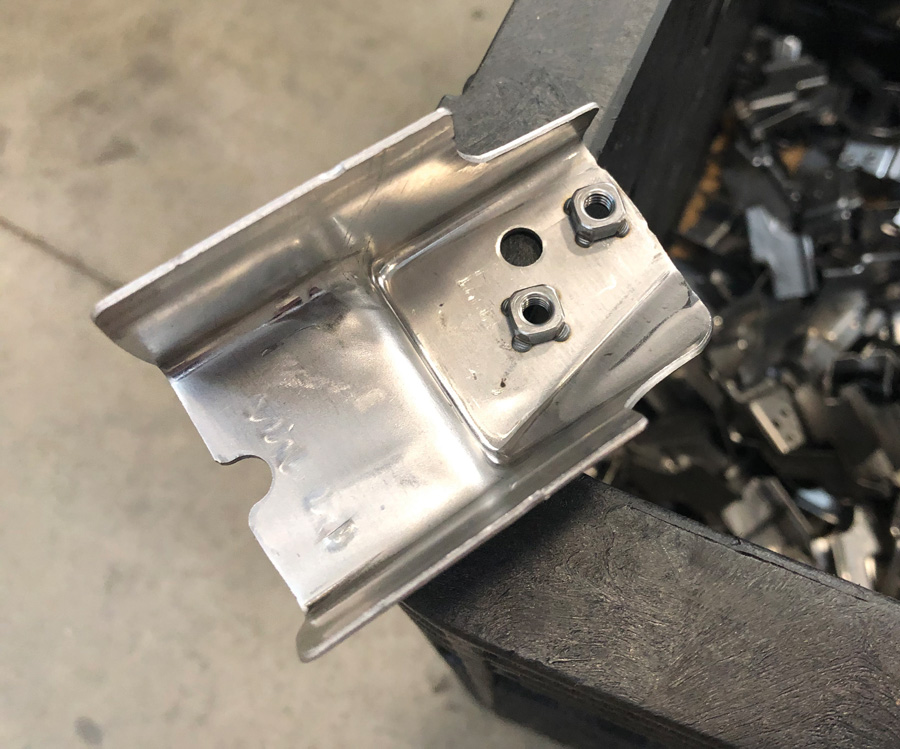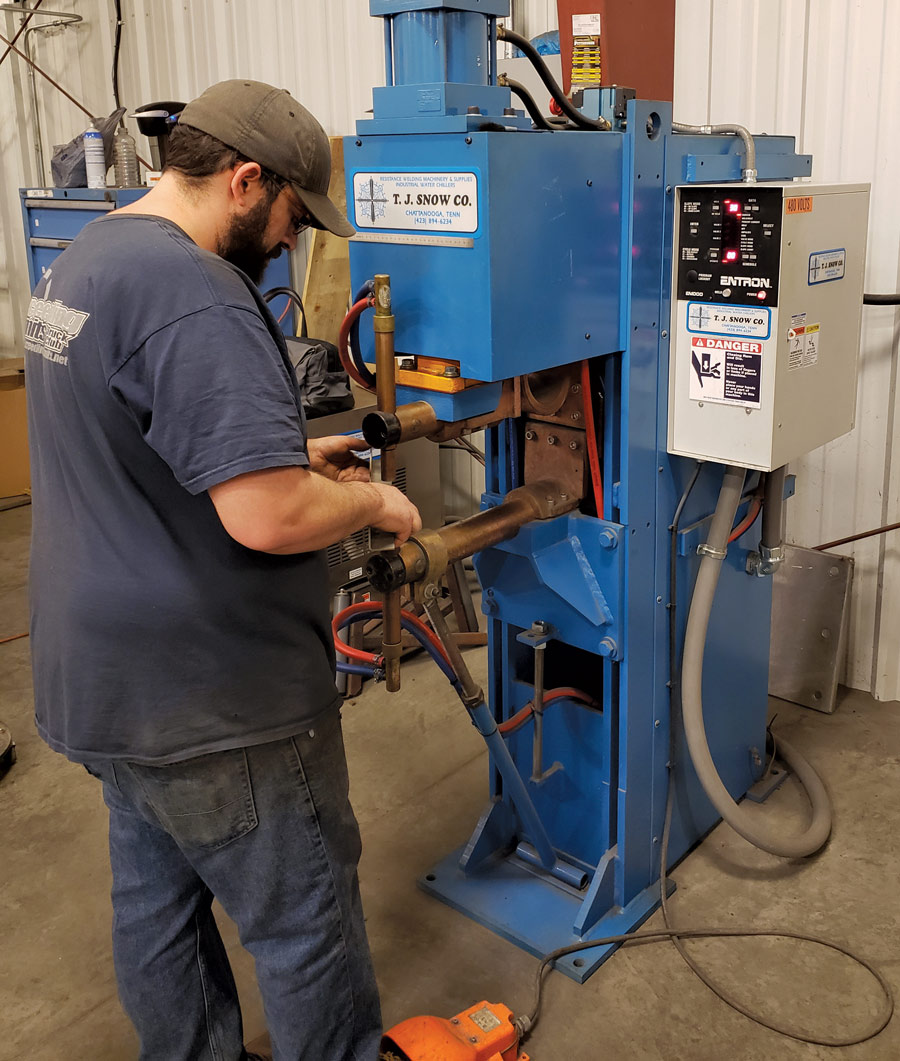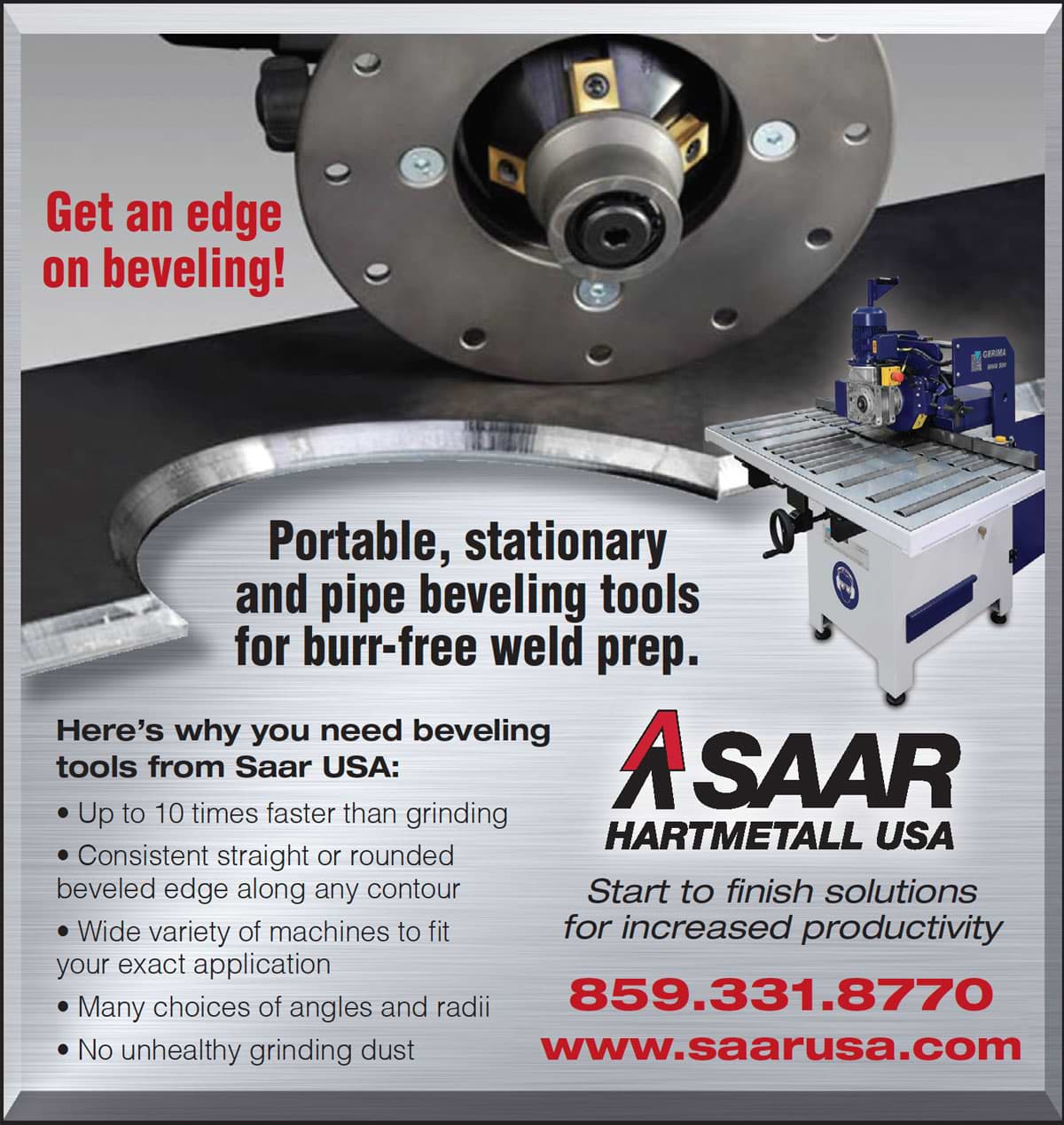esistance welding, long viewed as a stepchild in the family of welding, is finally gaining the attention and respect it deserves by manufacturers of metal parts, says Tom Snow, chairman of T. J. Snow Co. Inc.
This is especially true in applications such as resistance projection welding of nuts and studs to the high-strength steel alloys now being used in the automotive industry to reduce weight.
Founded in 1905, The Ohio Nut & Bolt Co., Berea, Ohio, advises customers on resistance welded fasteners and produces a wide selection of styles, which include parts designed to be either spot welded or projection welded. Spot welding can be done successfully with a rocker arm-type resistance welder, whereas projection-welded nuts and studs are best attached with a vertical action press-type machine.
When it won business with customers in the transportation equipment industry, Metal Solutions Inc., based in Vandergrift, Pennsylvania, was required to projection weld various nuts and studs in both carbon and stainless steel, as well as perform standalone spot welding.
“Projection welding was a new venture for us as this was yet to be in our wheelhouse,” recalls Robert Geer, vice president of Metal Solutions. “I contacted Buckeye Fasteners after seeing their company name on one of the drawings.”
Buckeye Fasteners is the distribution arm of Ohio Nut & Bolt, which in turn is both a vendor and a customer of Chattanooga, Tennessee-based T. J Snow, which makes, services and consults on resistance welding machinery.
Both T. J. Snow and Ohio Nut & Bolt offer lab services to analyze the type and size of resistance welding machine that would work best. Successfully welding fasteners to high-strength steels requires close attention to three main variables of the process: current, weld time and forging force.
To avoid getting weld splatter in the threads of a projection-welded fastener, it’s important to select a welder with a high kilovolt-amperes (KVA) rating so that weld time (current flow) can be minimized. It’s also advisable to use the proper type of resistance welding electrodes.
Metal Solutions purchased a remanufactured 100 KVA press-type spot welder from T. J. Snow. Snow started with a heavy based older unit, stripped it down and upgraded it with new parts, added an Entron programmable controller that holds 40 weld schedules, and a Koolant Koolers water recirculator and chiller, according to Geer.
Geer performed his due diligence by requesting quotes from other welding machinery builders but “I liked the idea of a heavier remanufactured model,” he says.


Foreman, resistance weld technician and weld department manager at Ohio Nut & Bolt, says, “T. J. Snow’s machinery and rebuilds are for all types of people, including those not familiar with the control unit of a resistance welder.”

 Resistance welding has often been considered a ‘black art.’
Resistance welding has often been considered a ‘black art.’ 
T.J. Snow Co. Inc.
Below: A nut welding application performed by
T. J. Snow Co. Inc.
“Many times I can have the customer [film] the welding process and I see the problem watching the welding. I make suggestions to fix the weld and they start experiencing good welds. If I notice the welder is too large or too small for that application, I contact T. J. Snow for help. They respond quickly, which helps satisfy our customers.”
Ohio Nut & Bolt sells fasteners across at least 5,000 distinct customers each year. “We sell to a few larger tiered customers, but the majority of our customers are smaller specialty shops and job shops that work in the automotive industry,” Foreman says.
By using recommendations about the correct fastener size, shape and projection type, Ohio Nut’s customers are able to apply the technology to both thick and thin materials. And as more and more companies express interest in automating processes, special nut feeders are often added to the machines to speed up production.

Both T. J. Snow and Ohio Nut & Bolt belong to the Resistance Welding Manufacturing Alliance, a standing committee of the American Welding Society that promotes use of the process. The alliance has introduced a Certified Resistance Welding Technician designation, which is awarded to applicants who pass a subject matter exam.
Ohio Nut & Bolt’s Foreman underwent T. J. Snow’s training, which he found very practical for everyday activities. “For example, if you lower the pressure on the electrode tip, the instructor explains what will happen, and then you learn about the overall operation. You find out the different things you can do to avoid common problems,” Foreman says.
T. J. Snow’s instructors are themselves field service technicians who work at the plant level on a daily basis. “They know what you need to learn and leave out what will go over your head,” Garmon says. “Instead of just teaching theory, they often use war stories from service calls to illustrate a point.”
www.metalsolutionsinc.net.
www.buckeyefasteners.com.
www.tjsnow.com.

